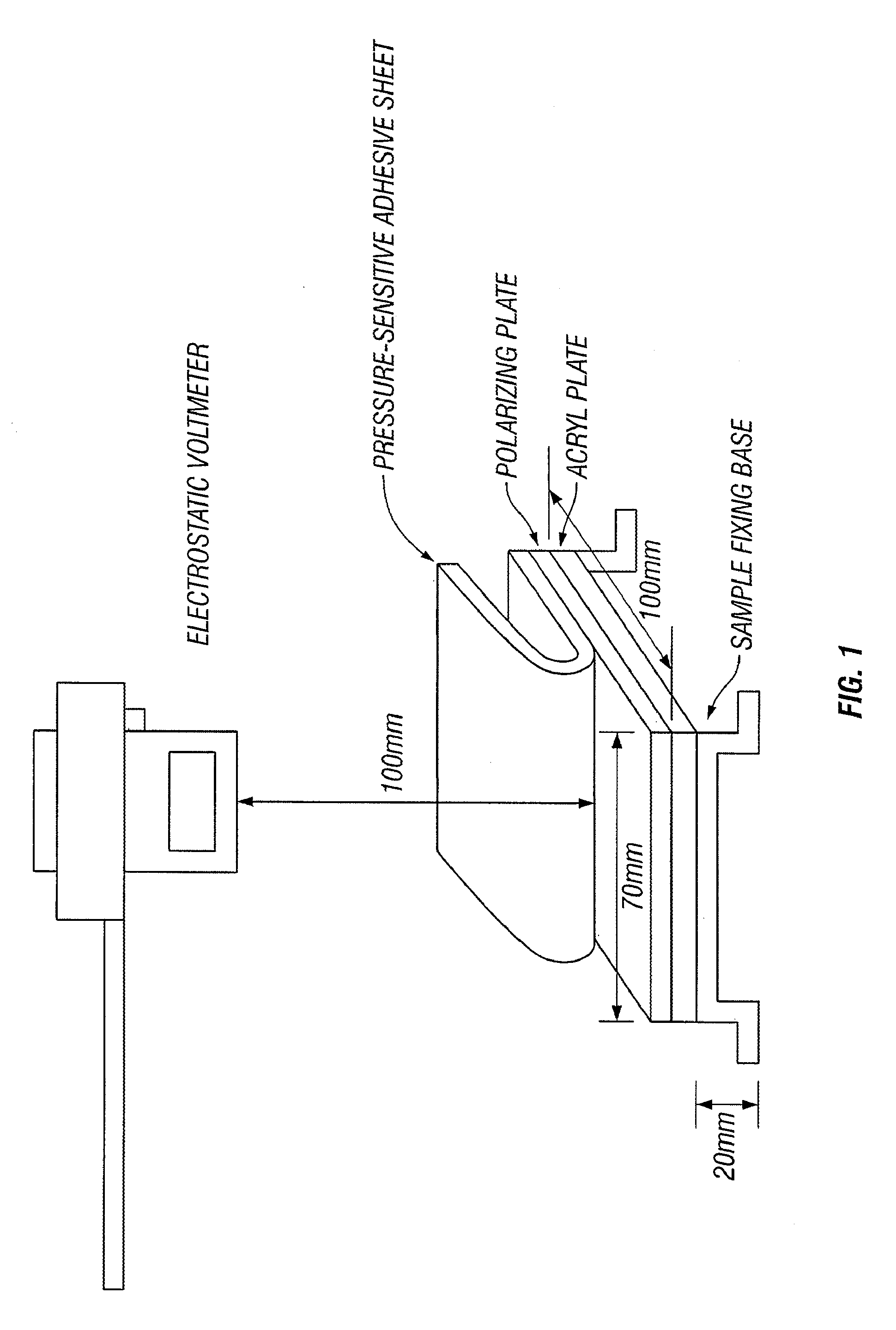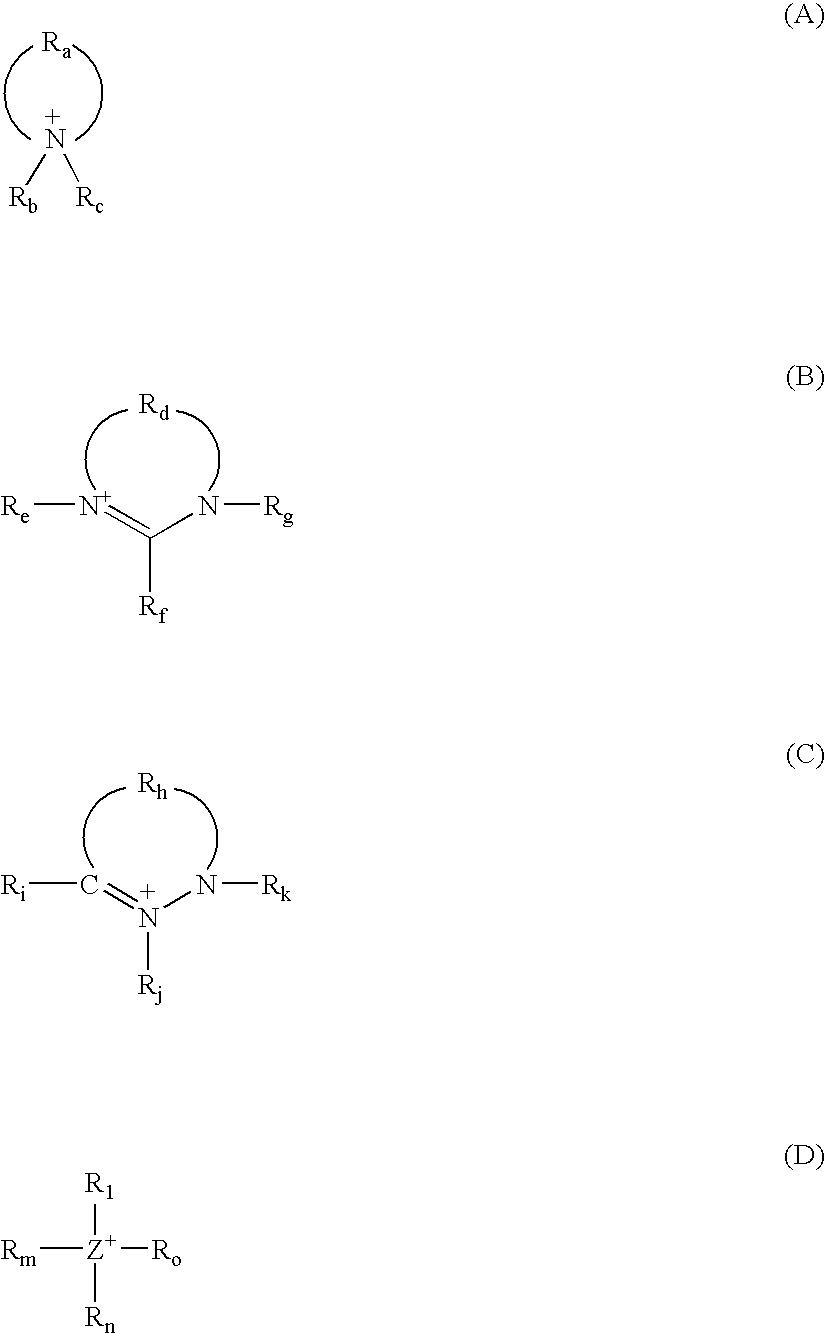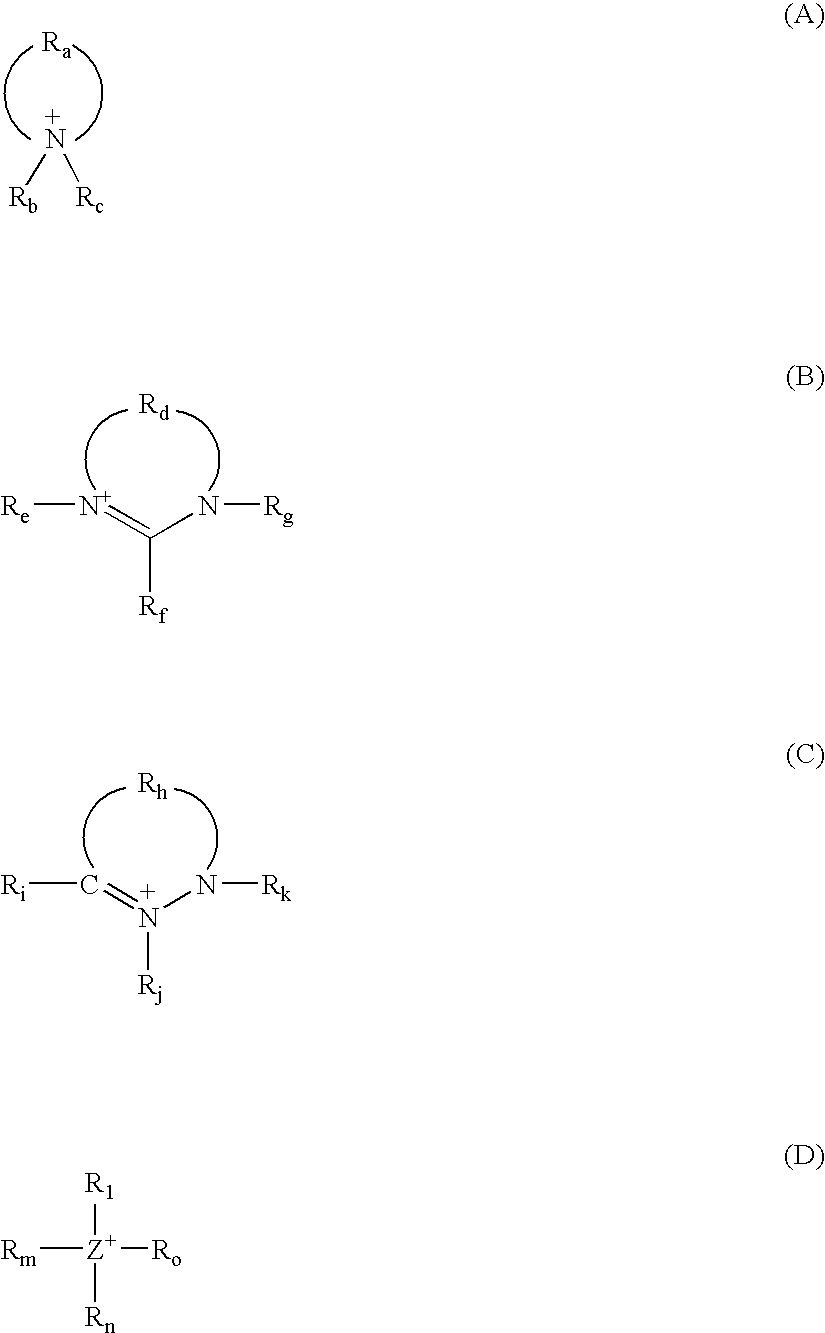Pressure-sensitive adhesive composition, pressure-sensitive adhesive sheet and surface protecting film
a technology of pressure-sensitive adhesive and composition, applied in the direction of film/foil adhesive, metal layered products, inks, etc., can solve the problems of insufficient antistatic ability, loss of orientation of liquid crystal molecule, generation of defect of panel, etc., to achieve sufficient maintenance of pressure-sensitive adhesive properties, improve compatibility with ionic liquid and base polymer, and low staining
- Summary
- Abstract
- Description
- Claims
- Application Information
AI Technical Summary
Benefits of technology
Problems solved by technology
Method used
Image
Examples
preparation example 1
Acryl-based Polymer (A)
[0193]A four-neck flask equipped with a stirring wing, a thermometer, a nitrogen gas introducing tube, and a condenser was charged with 200 parts by weight of 2-ethylhexyl acrylate, 8 parts by weight of 2-hydroxyethyl acrylate, 0.4 part by weight of 2,2′-azobisisobutyronitrile as a polymerization initiator, and 312 parts by weight of ethyl acetate, a nitrogen gas was introduced while mildly stirring, and a polymerization reaction was performed for 6 hours while maintaining a liquid temperature in a flask at around 65° C., to prepare a solution (40% by weight) of an acryl-based polymer (A). This acryl-based polymer (A) had Tg=−68° C., a weight average molecular weight of 500 thousands, and an acid value of 0.0.
preparation example 2
Acryl-based Polymer (B)
[0194]A four-neck flask equipped with a stirring wing, a thermometer, a nitrogen gas introducing tube, and a condenser was charged with 200 parts by weight of isononyl acrylate, 8 parts by weight of 2-hydroxyethyl acrylate, 0.4 part by weight of 2,2′-azobisisobutyronitrile as a polymerization initiator, and 312 parts by weight of ethyl acetate, a nitrogen gas was introduced while mildly stirring, a polymerization reaction was performed for 6 hours while maintaining a liquid temperature in a flask at about 65° C., to prepare a solution (40% by weight) of an acryl-based polymer (B). This acryl-based polymer (B) had Tg=−80° C., a weight average molecular weight of 540 thousands, and an acid value of 0.0.
preparation example 3
Acryl-based Polymer (C)
[0195]A four-neck flask equipped with a stirring wing, a thermometer, a nitrogen gas introducing tube, and a condenser was charged with 200 parts by weight of 2-ethylhexyl acrylate, 0.1 part by weight of 1-hydroxycyclohexyl phenyl ketone [Irgacure 184 manufactured by Ciba Specialty Chemicals], and 0.1 part by weight of benzyldimethylketal [Irgacure 651 manufactured by Ciba Specialty Chemicals], a nitrogen gas was introduced while mildly stirring, and a polymerization reaction was performed for about 3 minutes by irradiation with ultraviolet-ray with a high pressure mercury lamp (SHL-100UVQ-2 manufactured by Toshiba Lighting and Technology corporation), to prepare a solution of an acryl-based polymer (C) which is a partially polymerized polymer (syrup-like) of a polymerization ratio of 10%. This acryl-based polymer (C) had Tg=−70° C., a weight average molecular weight of 2200 thousands, and an acid value of 0.0.
PUM
| Property | Measurement | Unit |
|---|---|---|
| glass transition temperature Tg | aaaaa | aaaaa |
| temperature | aaaaa | aaaaa |
| carbon number | aaaaa | aaaaa |
Abstract
Description
Claims
Application Information
 Login to View More
Login to View More - R&D
- Intellectual Property
- Life Sciences
- Materials
- Tech Scout
- Unparalleled Data Quality
- Higher Quality Content
- 60% Fewer Hallucinations
Browse by: Latest US Patents, China's latest patents, Technical Efficacy Thesaurus, Application Domain, Technology Topic, Popular Technical Reports.
© 2025 PatSnap. All rights reserved.Legal|Privacy policy|Modern Slavery Act Transparency Statement|Sitemap|About US| Contact US: help@patsnap.com



